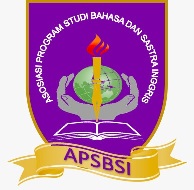SYNTACTIC SHIFTS IN ENGLISH-INDONESIAN TRANSLATION (A Case Study of the Fifth Semester Students of the English Department of State University of Semarang)
Abstract
This final project is about syntactic shift used in English-Indonesian translation by the fifth semester students of the English Department of State University of Semarang in the academic year of 2013/2014. The objectives of the study are to describe what types of syntactic shifts are commonly used and less used by the fifth semester students, and to explain how the fifth semester students do syntactic shift in English-Indonesian translation. The study uses descriptive qualitative approach and it belongs to a case study. The subject of the study is the fifth semester students of the English Department of State University of Semarang in the academic year of 2013/2014. The source of data is the students’ translation tests which have been done in the fifth semester entitled Advantages of Translation. It was a task given by Dr. Rudi Hartono, S.S. M.Pd. as the lecturer in English-Indonesian Translation class in fifth semester. From five sub-categories of syntactic shift, there are three sub-categories of them which were used by the fifth semester students. Translation by using word-into-phrase shift reaches a total of 86.4%. About 10.2% is the translation by using phrase-into-clause shift. The other 3.4% is the translation by using clause-into-sentence shift. Both phrase-into-sentence and sentence-into-paragraph shifts are not found in the students’ assignments of English-Indonesian translation.References
Baker, M. 1992. In Other Words: A Coursebook on Translation. New York: Routledge.
Bassnett, S. 2005. Translation Studies. London: Routledge.
Catford, J.C. 1965. A Linguistic Theory of Translation. Oxford: Oxford University Press.
Creswell, J.W. 2007. Qualitative Inquiry and Research Design: Choosing Among Five Approaches. London: Sage Publications Ltd.
___________. 2012. Educational Research: Planning, Conducting, and Evaluating Quantitative and Qualitative Research. Boston: Pearson Education, Inc.
Leech, G., Deuchar, M. and Hoogenraad, R. 1982. English Grammar for Today. London: Macmillan Education Ltd.
Mildred, L.L. 1984. Summary of Meaning Based Translation: A Guide to Cross Language Equivalence. Lanham: University Press of America.
Newmark, P. 1988. A Textbook of Translation. Shanghai: Shanghai Foreign Language Education Press.
Simatupang, M.D.S. 2000. Pengantar Teori Terjemahan. Jakarta: Direktorat Jenderal Pendididkan Tinggi Departemen Pendidikan Nasional.
Suryawinata, Z. 1989. Terjemahan: Pengantar Teori dan Praktek. Jakarta: Departemen Pendidikan dan Kebudayaan Direktorat Jenderal Pendidikan Tinggi Proyek Pengembangan Lembaga Pendidikan Tenaga Kependidikan.
Widyamartaya, A. 1989. Seni Menerjemahkan. Yogyakarta: Kanisius.


_.jpg)
_.jpg)




